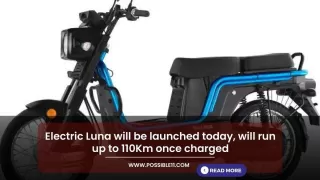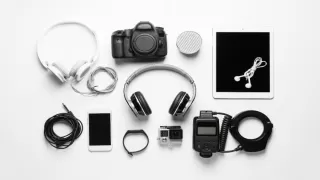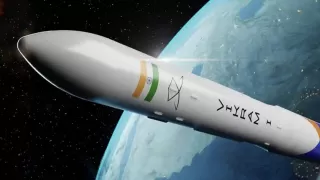India's moon mission When Russia launched its lunar mission Luna-25, it was said that it would reach the lunar surface before India's Chandrayaan-3. India launched Chandrayaan-3 on July 14 and it has to make a soft landing on the lunar surface on August 23.
28 days after the launch of Chandrayaan-3, Russia launched Luna-25 and it was to land on the lunar surface on 21 August. But this could not happen. Luna-25 crashed on August 20, a day before landing.
At the same time, Chandrayaan-3, which is slowly moving towards the moon as compared to Russia, is now ready for landing. ISRO scientists are very positive about this landing.
Foreign media is also looking at the failure of Russia's lunar mission and India's Chandrayaan-3 with full of hope. Read further what has been published on the lunar mission of India and Russia in some major foreign media institutions.
The reason for Russia's failure

News agency AP has reported on the crash of Luna-25 of Russia.
In this report, the statement of the head of Russia's space agency has been published, in which he had attributed the failure of Luna-25 to Russian inaction towards the lunar mission for a long time.
Yuri Borisov, head of Russia's space agency, said, "The work that was to be done in 84 seconds was done in 127 seconds." Due to this, an emergency-like situation was created.
Luna-25 was Russia's first lunar mission after 1976.
Yuri Borisov says, "The obstacles that came in the way of the lunar mission for the last 50 years are the main reason for its failure. If Russia stops this program now, it will be the worst decision.
AP writes that Luna-25 was in race with India's Chandrayaan-3. Chandrayaan-3 is trying to land on the South Pole. Both Russia and India had decided to land on the lunar surface between 21 and 23 August.
India tried to land on the moon in 2019 but then the spacecraft crashed.
Luna-25 was important for Russia in many ways. In the midst of the ongoing war with Ukraine, Russia wanted to give this message to the world that it is still capable of reaching the moon. Due to the ongoing war with Ukraine for 18 months, Western countries have imposed strict sanctions on Russia.

Due to these restrictions, Russia's space program has also suffered because there are obstacles in getting technology from western countries. Luna-25 was supposed to go to the moon with a small rover in the first size, but this idea was abandoned.
Scientists have been eyeing the South Pole for a long time. Scientists believe that water can be stored in craters always visible in the dark on the moon. This water can be used as rocket fuel in future.
Russia was racing with India but...
According to the report of the Financial Times, Russia was in the race to beat India in the Luna-25 mission. Russia's Luna-25 crashed but India is ready to land on the south pole of the moon. The failure of Luna-25 also casts doubt on Russia's future attempts to go to the moon. Especially at a time when Russia is facing a costly war with Ukraine.
Along with this, due to international sanctions on Russia, Russia is also facing problems on the use of western technology and research.
Speaking to Russia's newspaper RBC, an expert Alexander Zheleznyakov said, "Any failure in space affects future space programs in the country." In the case of Russia, the strategy of making new landers will have to be changed because 47 years have passed and a lot has changed since then.

Alexander said in this report, "Science and technology have changed very rapidly, but unfortunately we have lagged behind in the past years." We have to get excited again and learn all that again.
The Financial Times writes that Russian scientist Mikhail Marov, who was an important figure in the era of the Soviet space program, was shocked by the crash of Luna-25. Mikhail told that Luna-25 was his life's work and he had to be admitted to the hospital after hearing the news of the crash.
Preparing to go to the Moon
The Washington Post put a headline related to the report of Russia's lunar mission failure and India's attempt to reach the moon, 'crowded on the moon'.
This American newspaper writes in its report that the moon may be dead or desolate, but at this time the moon is the most popular real estate of the solar system, where many countries of the world aspire to reach.

Under this, Russia wanted to reach the moon on 21 August and India is preparing to land on the moon on 23 August. But Russia's Luna-25 crashed on Sunday.
Apart from these efforts of Russia and India, Japan is also taking steps in this direction. Japan's Space Agency is also preparing to launch a small lander so that the technology related to landing can be tested.
Private companies of Israel and Japan have made unsuccessful attempts to land the spacecraft in the last few years. Although China is preparing to send astronauts to the moon by 2030.
At the same time, America's space agency is preparing to build long-lasting infrastructure on NASA.

The Washington Post writes that somewhere in all this a race has started. Now the goal is not that who is above whom, but it is now a matter of reaching one location first.
It is very important to have access to the water present at the South Pole because water is most important for any human settlement.
Also, hydrogen and oxygen available in the water found at the South Pole can be used for rocket fuel. There are also possibilities of making a gas station on the moon, which can make it easier to go to other places in space.

NASA has estimated that in the next decade, human interference on the moon will be much more than before.
The Washington Post writes that India is trying to give flight to its space dreams. Under this, after the failed lunar mission in 2019, he is preparing to land on the moon with Chandrayaan-3.
If all goes well, Chandrayaan-3 will land on the moon on 23 August. Earlier in 2019, private companies of China and Israel have also made such efforts but failed.
Also Read: What is a hydrogen car and how do they work?




























